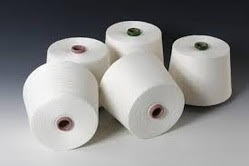How To Choose The Best Sourcing Agent For Polyester Yarn?
Posted by Admin on April, 26, 2024

If you're trying to find fabric for a new collection but don't know where to start, this can help. You're in the proper location. Purchasing fabric is the most difficult part of developing a new product. Finding the ideal fabric to complement your design is the next step after the design is complete. This is a brief guide on the most effective way to source fabric from sourcing agents for Polyester Agent.
Be Aware of the Fabric Requirements
Clarity regarding your fabric requirements should be your priority. Before contacting suppliers, you should consider the following advice:
1. Type of Fabric
The fabric you choose will determine how well your clothing fits and functions. Therefore, an essential component of the design process is comprehending the fabric construction.
Woven: The most popular kind of fabric, in which a checkered pattern is created by the yarns being interlaced at right angles. It is primarily utilized for collared shirts, suits, and jeans.
Knitted: Interloped yarns, or knits, are a common fabric option for lightweight clothing. Sweaters, leggings, and t-shirts are frequently made with it.
Non-woven: Due to its capacity to wick away moisture, this is primarily used in sportswear and swimsuits. They are created by chemically or mechanically joining fibres.
Choosing high-quality fabric depends on the intended use of the garment. You must consider the content and composition of the fabric.
2. Fabric Type
There are two types of weaves and knits: natural and synthetic:
Natural fabrics are created from resources that can be found in nature, such as hemp, cotton, silk, and wool.
All of the chemicals used to make synthetic fabric, including polyester, rayon, and acrylic, are chemicals.
3. Details and Amount
In addition to knowing the type and material of the fabric, you also need to be aware of the following:
a) The MOQ, or minimum order quantity
The minimum order quantity (MOQ) is the lowest amount that can be ordered from a supplier for each order. Price and fabric measurement are two factors that are taken into consideration when thinking about the same thing. The minimum order quantity (MOQ) varies depending on the materials, manufacturing costs, and location of each supplier, fabric mill, or jobber.
b) Cost Per Yard or Meter
The price of fabric is determined by the cost of manufacturing the fabric as well as the market you intend to source from. Your budget, after accounting for any trims and fastenings, fabric yield, and the final retail price of your product, will determine the price you pay per metre.
c) The Width of the Fabric
The two measurements are cuttable width and total width. Since the cuttable width from your supplier is a side-to-side measurement less the selvedge, you should only consider that.
Make a layout of the pieces in your pattern to determine how much fabric you will need to order.
d) Weight of Fabric
The fabric's weight is expressed in grams per square meter (GSM). The fabric will be denser the higher the GSM. For example, a 180-200 GSM linen shirt would be thicker and better suited for the winter.
Examples of fabric weight are as follows:
• Lightweight textiles: lace, organza, voile, mesh, and chiffon
• Medium : weight materials include velvet, cashmere, satin, and polyester.
• Thick fabric: canvas, wool, flannel, denim, sheeting
Follow this guide to choose the best sourcing agent for a polyester agent.
This entry was posted on April, 26, 2024 at 12 : 12 pm and is filed under Sourcing Agent for Polyester Yarn. You can follow any responses to this entry through the RSS 2.0 feed. You can leave a response from your own site.
Search
Category
Recent Posts
